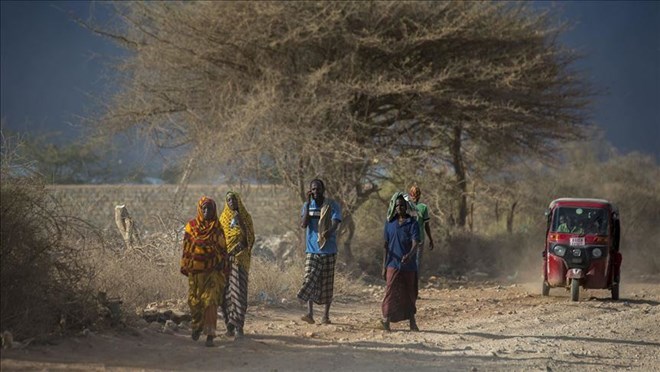
Thursday October 1, 2020
Assistance must be sustained through December 2020 to prevent Crisis or Emergency
outcomes for 2.1M people, says report

Up to 2.1 million people in Somalia are expected to face an acute food insecurity Crisis (IPC Phase 3) or even worse outcomes through December 2020, a new report said on Wednesday.
The crisis expected to occur “through December 2020 in the absence of humanitarian assistance,” is due to “the combined effects of widespread and severe flooding, Desert Locust infestation, socioeconomic impacts of COVID-19 and the cumulative impacts of previous shocks,” Food Security and Nutrition Unit (FSNAU), a project managed by the Food and Agriculture Organization of the UN, said in the report.
“In addition, 849,900 children under the age of five are likely to be acutely malnourished through August 2021,” the report read.“From October to December, food insecurity is expected to deteriorate among poor households with limited livestock or low capacity to cope with harvest losses,” the report warned.
“2020 Gu cereal production in southern Somalia is estimated at 74,000 tons. This is 40 percent lower than the long-term average for 1995-2019. The main factors for below-average 2020 Gu cereal production include: recurrent and severe flooding, erratic rainfall and a prolonged dry spell, insecurity and conflict,” FSNAU explained.
The report went on to warn that an additional 3 million people in the east African country “are expected to be Stressed (IPC Phase 2), bringing the total number of people facing acute food insecurity to 5.1 million.”
“Humanitarian assistance must be sustained through December 2020 to prevent Crisis (IPC Phase 3) or Emergency (IPC Phase 4) outcomes for 2.1 million people,” FSNAU urged.
Climate change has been markedly felt in Somalia, Chad and the Sahel region, according to remarks by Samba Harouna Thiam, the head of the UN Environment Liaison Office, in September last year.
Rising temperatures and unpredictable rainfall caused by climate change have lowered crop yields. It is poor communities that often face greater exposure to climate hazards.